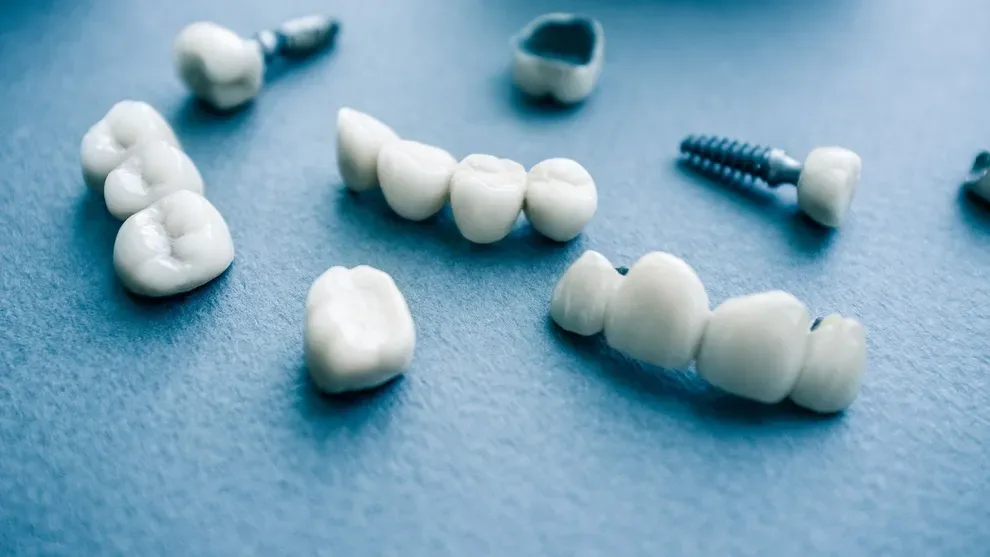Zirconia Crowns: Pros, Cons & Costs

Table of Contents
- Why Zirconia
- Dental Crown Costs
- When to Get a Zirconia Crown
- Advantages
- Downsides
- Placing a Zirconia Crown
- The Bottom Line
Zirconia is a type of metal that is a newer material being used in dental crowns. A zirconia crown is classified more like a ceramic crown.
Zirconia crowns are known for their strength and durability. They can have the strength of metal, but they look more like ceramic. It can be difficult to get zirconia to match the exact color of your teeth, however.
These crowns are more expensive than traditional crowns. They cost upwards of $1,000 to $2,000 each.
The upside of zirconia crowns is that they can be longer lasting, like metal crowns. They look more like a natural tooth, similar to ceramic crowns, and they are stronger and more durable than porcelain crowns. Cons include price and exact color matching.
Overall, a zirconia crown can potentially save you money, as they may need to be replaced less often than other types of crowns.
Why Zirconia?
Dental crowns are basically “caps” that go over your tooth to restore its appearance, strength, size, and shape. They can be made out of a variety of materials — traditionally, porcelain or composite materials. They can also be crafted from metal, such as gold, which is much stronger than porcelain or ceramic.
Zirconia is a newer metal material being used in dental crowns. It is as strong as a metal but looks more tooth-colored like ceramic.
Zirconia crowns can often be crafted on site at dental offices that have CAD/CAM technology. This is used to shape and form a customized zirconia crown.
Dental Crown Costs
Dental crowns typically cost between $500 and $1,500 per tooth on average. This cost is impacted by a variety of factors, including:
Difficulty of the procedure.
Location of the crown being placed.
Oral health and whether or not a root canal or additional prep work is necessary.
Material used.
Zirconia crowns can cost between $1,000 and $2,500 on average, which is significantly more than a traditional crown.
When to Get a Zirconia Crown
There are several reasons you may need a crown placed on your tooth, such as:
To cover a cracked or chipped tooth.
To protect and reshape a tooth after a root canal.
To cover a dental implant.
To fill a gap or space from a missing tooth for a bridge.
To cover a hole left by a cavity that is too big for a regular filling.
Zirconia is a strong material. When used for a crown, it can improve your bite and appearance while protecting your tooth from future damage.
In addition to Zirconia being used for dental crowns, zirconium is also known for its usage in various prostheses for surgeries of knees, hips, fingers, and ears.
Advantages
Some of the biggest upsides of a zirconia crown are its strength and durability. Zirconia crowns have been shown to offer the same level of longevity that other metal crowns do, with the added benefits of being more aesthetically pleasing and closer to tooth color than other metals.
Zirconia crowns are strong and resistant to chipping or breaking. This makes them a hardier option than ceramic or porcelain crowns.
Unlike other metal crowns, zirconia also has a high level of biocompatibility, meaning that your body is less likely to reject a zirconia crown. Zirconia crowns can provide optimal mechanics and potentially last a long time.
Another benefit of a zirconia crown is that many dentist offices have the technology to form them in house, so you will not have to have a temporary crown placed. As a result, your crown placement can be done in one appointment instead of two.
Downsides
One of the cons of a zirconia crown is that it can be tricky to match it exactly to the color of the tooth. It often appears just a shade different from your natural tooth color.
Zirconia crowns look closer to tooth color than metal crowns, but they are not as easy to match as ceramic. As such, they are often coated with ceramic, but this makes the outer shell not as strong and more prone to chipping.
Zirconia crowns can fail if not prepped correctly. Not all dentists are trained properly in preparing the tooth for a zirconia crown. And not all zirconia is created equal. The formulation of some zirconia may not be as strong as it should be.
Placing a Zirconia Crown
A zirconia crown can be placed in one or two visits, depending on the technology your dentist has in their office. The procedure will look like this:
Your tooth will be x-rayed and prepped. If you need a root canal, this is done at an additional visit.
Often, a local anesthetic will be applied.
Part of your tooth is either removed or filed down if needed.
An impression is taken of your tooth and bite.
The dental lab makes the crown.
If necessary, a temporary crown is placed while waiting for the permanent crown to come back from the lab.
The permanent crown is placed and cemented in during another visit.
With a same-day procedure, the dentist will take digital pictures and scans. They’ll then use these to formulate your zirconia crown. The crown can be cemented down during the same visit, as the crown is made in the office if your dentist has the CAD/CAM technology and equipment to do so.
The Bottom Line
Zirconia crowns can provide a high level of strength and durability. They offer convenience, as they require fewer office visits to place. They can eliminate the need to use a temporary crown.
These types of crowns are often best for posterior (back) teeth, as the color may not be an exact match, although it will be better than other metal crowns. Zirconia crowns can cost more, but they also require less frequent replacements. Talk to your dentist about whether a zirconia crown may be right for your specific situation.
